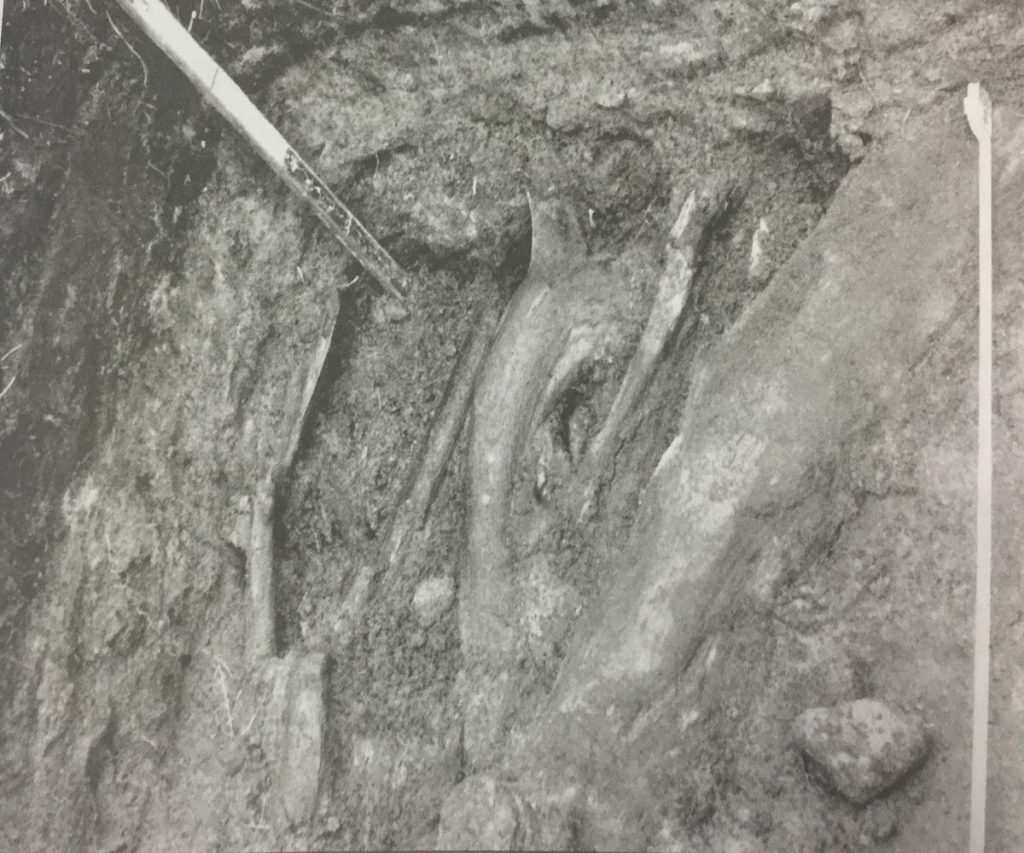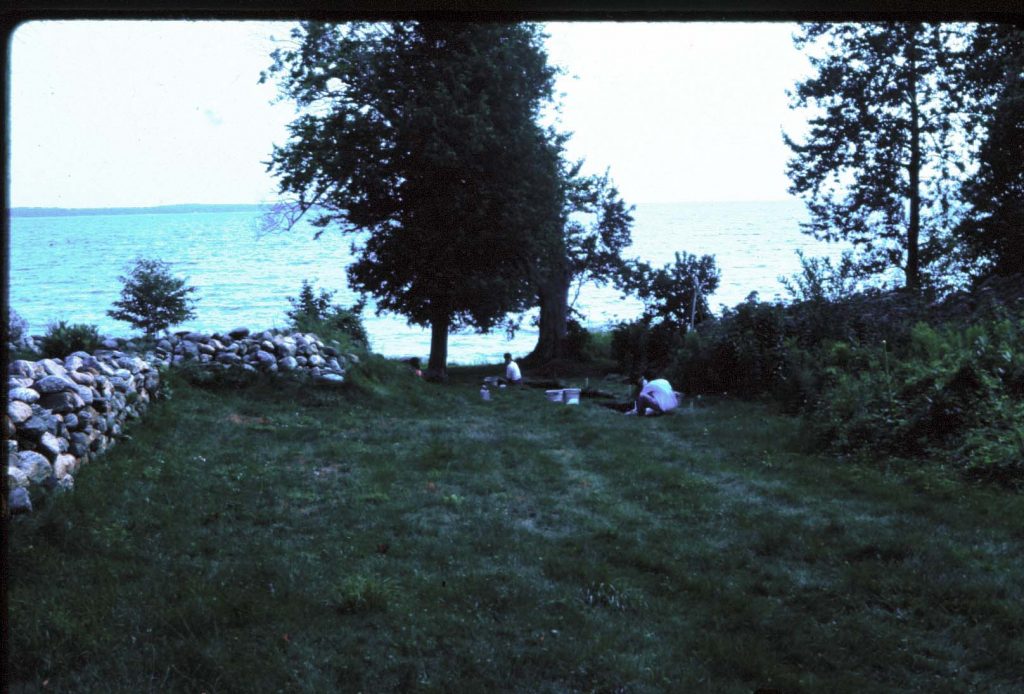The Dig
The site was not subject to archaeological investigation until the summer of 1965, when Wilfrid Jury and Peter Carruthers carried out archaeological excavations supported by the Ontario Ministry of Tourism and Information, the Ontario Historic Sites and Monuments Board, and the St. Marie I Restoration Project.
Excavations were preceeded by consultation with the Beausoleil First Nation who now occupies the Island and permitted the work. They required that the excavations be carried out in part by band members and confined to a single test trench inside the walls of the compound. Artifacts recovered from excavations were to remain on the island in the possession of the people. The whole community was interested in the project and the crew worked hard for a two week period not knowing the importance of their work in the future.
The surface features within the enclosure were irregular but there did not seem to be signs of previous large, random excavations, although there had been reports of some. Other reports also stated that on one occasion the interior ground had been ploughed or perhaps only disked and that the stone enclosure had been used as a pig pen. At least eight substantially sized trees were located within or associated with the site including birch, elm, beech, cedar, and maple species.
The existing stone work in 1965, marking the walls of the site, consisted of low piles of field stone, arranged in an approximate hundred foot square with irregular bastions on each comer. The walls, by no means straight, were still consolidated with aged mortar in a few places, notably on the east and south sides and the masonry appeared to be in relatively good shape. The highest point of the rock structure was in the south-east bastion, reaching a height of four or five feet. In the majority of places, however, it was only a few feet in height. The orientation of the stone wall was checked with a prismatic compass and the lie of the centre line of the compound (i.e., parallel to east and west walls) was found to be approximately 5° east of north. Because of the closeness of the structure to a north-south-east-west wall alignment, it was decided to use a north-south grid on the site.



